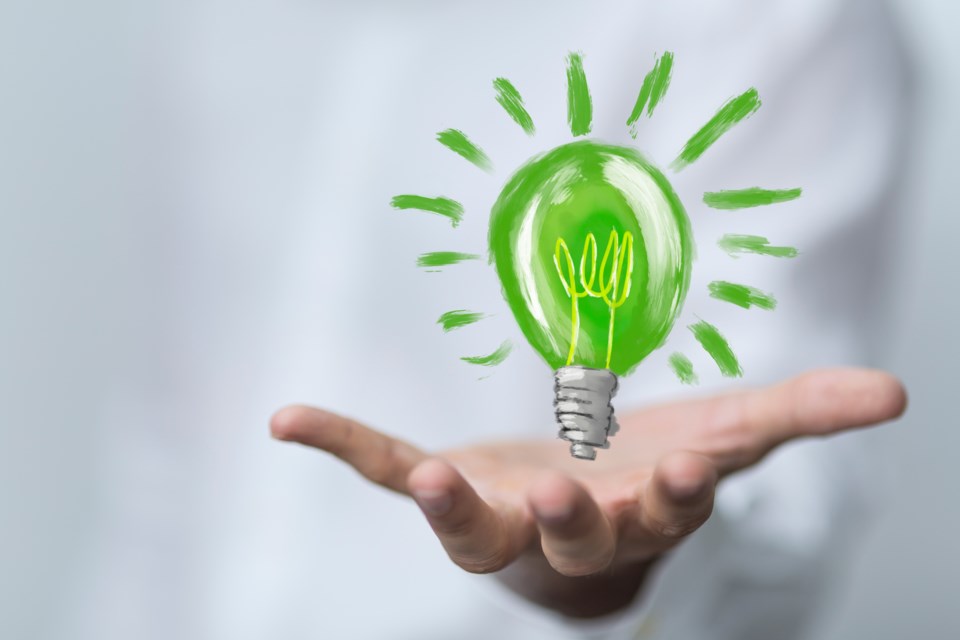The following is the second of a two-part series from Sustainable Orillia on their recent report to city council as it looks to the future in a climate change constrained environment. Click here to read Part 1.
**********
So what are the most likely technologies for energy production that we can expect to see developed in the very near future here in Orillia and elsewhere?
Part 1 of this series reported that Stan Mathewson, on behalf of the Infrastructure and Energy sector of Sustainable Orillia (SO), went before the Orillia City Council on Sept. 11 with a report prepared by SO’s volunteers after several months of research. The aim of the report was to assist council and city staff with an overview of alternative sources of clean energy—sources that can be developed locally to ensure the city meets its future energy needs as we make the transition from fossil-fuels to an emission-free, all-electric economy.
As noted in Part 1 of this series, ideally, much of this generation will be done locally. To do so — and in doing so, to replace all fossil-fuel generation — will require the city to find an estimated additional 62 MW of energy, a 300 per cent increase from the generation currently done by Orillia Power Generation Corporation (OPGC).
The process of making this transition may well involve one or more community energy corporations — and individuals and businesses, as well — all working to generate renewable electrical power. This transition will need to begin immediately — and it is the goal of the City of Orillia’s climate change report (Orillia’s Climate Future) to do just that.
First on the SO list is hydroelectric power, already a major source of energy for the Orillia community for over 100 years. New turbine technology may allow further generation from rivers in this area (and from Niagara, as well, of course).
Companies around the world are looking at new turbine designs, storage capacity and variable-speed turbines to increase generation from sites that have been developed over the past 100 years. It is unlikely, however, given the development of this resource over the century, that the energy needs of our community and the whole province can be met by hydropower sources alone.
Readers may be surprised to learn that hydrogen may be a major source of energy in the coming years. In 2022, SO initiated a discussion on the potential for Orillia to become a “hydrogen hub” on the Highway 11 and 12 freight corridors with the establishment of a hydrogen production facility in the area.
Orillia’s clean hydro-electricity and sources of water supports the viability of generating hydrogen as a fuel, as an energy source, here in the Orillia area. When the electricity to produce hydrogen from water is from renewable electricity sources, the hydrogen is called “green” and is what we should be striving for in our effort to stem climate change.
Hydrogen is an attractive fuel option for transportation because it is portable and has a high energy density like gasoline or diesel. Unlike fossil fuels, it is a clean fuel that, when consumed in a fuel cell to produce electricity to run a vehicle’s electric motor, produces only water. (And how amazing is that when compared to what our vehicle emissions are currently doing to our atmosphere!)
Other alternative energy sources presented in the report include:
• rooftop solar,
• ground-mounted solar,
• large scale wind turbines,
• micro wind turbines,
• distributed generation,
• small modular nuclear reactors,
• geothermal,
• biogas,
• heat exchange systems, and
• energy storage
That’s quite a list of alternatives! Of these, large-scale wind turbines now provide the lowest cost electricity from a proven, efficient technology.
Large-scale solar farms also generate low-cost electricity. In fact, recently developed wind and solar energy installations are already generating energy at costs even cheaper than the cost of coal generation — raising the possibility of coal generation being replaced by renewables, particularly in developing countries that desperately need to increase their generation capacity.
Geothermal, of course, is already being used worldwide (think Iceland!) and could be an efficient source of heat energy for new subdivisions and apartment buildings. New advances in technology also make micro wind turbines — small enough to mount on a residential rooftop — efficient, less visible and more viable.
Many of the technologies listed above, especially rooftop solar and micro wind turbines, can be adopted by individuals, families and local businesses. Doing so will not only provide renewable energy to the community; these technologies may also be a source of revenue for the owners.
Various jurisdictions around the world are also experimenting with pilot projects that explore a combination of the technologies. Rooftop solar in a community can feed into a single energy storage system, rooftops producing electrical energy in the daytime and then member houses drawing from the community energy storage system (i.e. a very large battery) during the dark hours. Wind generation can also be used this way —a nd may be more reliable than solar in some locations.
SO’s report to council underscored the fact that the technology to close the gap on green alternate energy currently exists — and is developing rapidly — to begin the transition from fossil fuels to clean energy generation in Orillia.
To access the full report, click here.
The City of Orillia is starting the change process now. All of us who make up this wonderful community can join in that process. Some will do so quickly. Some will take a bit longer. But the process of change is upon us. Let’s embrace it.
